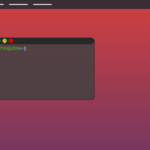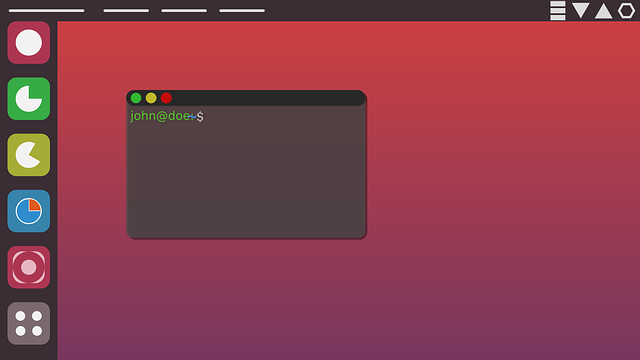Mastery of the command-line interface (CLI) within Linux is essential for electrical engineers seeking to enhance their technical proficiency and streamline their workflow. The CLI offers a versatile suite of tools for embedded system programming, sensor data analysis, electronic circuit simulation, and more, all within an environment that prioritizes automation, configuration management, and efficient file system manipulation. Bash scripting, along with tools like GCC and debugging utilities, provide customization and optimization options tailored to electrical engineering projects. The CLI's ability to handle large datasets and integrate with version control systems like Git is particularly beneficial for collaboration on complex projects. Tools such as `gtkwave`, `sigrok`, `GNU Radio`, `Xyce`, and the Inventor Toolkit, available in the Linux ecosystem through package managers like `apt` or `yum`, complement the CLI by enabling precise signal visualization and acquisition, advanced scripting with libraries like NumPy or SciPy, and hardware prototyping. This powerful combination of tools within Electrical Engineering with Linux creates a cohesive workflow that is both efficient and adaptable to the demands of modern engineering practices.
Dive into the intricacies of electrical engineering through the robust command-line interface (CLI) on Linux. This article unveils the power and efficiency of mastering CLI tools, tailored for electrical engineers. Explore advanced command-line tools and scripts that streamline complex tasks, enhancing productivity and precision in your workflow. Embrace the CLI as an indispensable asset in your toolkit, elevating your capabilities within the Linux environment.
- Mastering the Command-Line Interface in Electrical Engineering with Linux
- Advanced Command-Line Tools and Scripts for Electrical Engineers on Linux
Mastering the Command-Line Interface in Electrical Engineering with Linux

Electrical engineers who leverage Linux as their primary operating system can significantly enhance their productivity and problem-solving capabilities by mastering the command-line interface (CLI). The CLI in Linux provides a robust set of tools that are indispensable for electrical engineers, offering a direct line of communication with the system’s kernel. Tools like Bash scripting, GNU Compiler Collection (GCC), and debugging utilities are integral to tasks such as programming embedded systems, analyzing data from sensors, and simulating electronic circuits. By using the CLI, engineers can automate repetitive tasks, manage complex system configurations, and navigate file systems with precision. This proficiency is particularly beneficial in environments where real-time data processing and quick iterations are paramount, as is often the case in electrical engineering projects. Moreover, the versatility of Linux and its CLI allows for a wide array of customizations and optimizations that can be tailored to specific project requirements, ensuring that engineers have complete control over their development environment. The command-line environment’s ability to handle large datasets and its integration with version control systems like Git make it an ideal platform for collaboration on complex engineering projects, further underscoring its importance in the field of electrical engineering. Mastery of the CLI thus empowers engineers to tackle challenges with efficiency and flexibility, contributing to innovation and advancement within the industry.
Advanced Command-Line Tools and Scripts for Electrical Engineers on Linux

Electrical engineers leveraging Linux as their operating system of choice can tap into a rich ecosystem of command-line tools and scripts that streamline complex tasks, from signal processing to hardware interface management. Tools like `gtkwave` for viewing signals, or `sigrok` for acquiring them, are indispensable for electrical engineers working at the command line in Linux. These advanced utilities provide deep integration with the terminal, allowing for precise control and automation of tasks that would otherwise be time-consuming and prone to human error. Additionally, scripting languages such as Bash or Python, when combined with libraries like NumPy or SciPy, enable engineers to perform sophisticated data analysis, simulation, and visualization directly from the command line. This not only accelerates problem-solving but also facilitates a more seamless workflow for those who prefer the precision and power of text-based interfaces over graphical ones.
Furthermore, the Linux command-line environment is extensible through package managers like `apt` or `yum`, which provide access to a vast array of specialized software. Electrical engineers can install tools like `Xyce` for circuit simulation, `GNU Radio` for signal processing, and `Inventor Toolkit` for hardware prototyping, all from the command line. These tools, when combined with scripting and automation techniques such as cron jobs or systemd services, allow for the creation of complex workflows that can be replicated and maintained with minimal effort. This level of customization and control is particularly valuable in the field of electrical engineering, where experimentation and rapid iteration are key to innovation and problem-solving.
In conclusion, mastery of the command-line interface stands as an indispensable skill for electrical engineers operating within the robust environment that Linux offers. The intricacies of advanced command-line tools and scripts not only streamline complex tasks but also enhance problem-solving capabilities. By embracing this powerful toolset, professionals in the field of electrical engineering can unlock a level of efficiency and control that graphical user interfaces cannot match. As the digital landscape evolves, the proficiency with Linux command-line utilities will remain a cornerstone for those who seek to harness technology’s potential to its fullest extent.


























